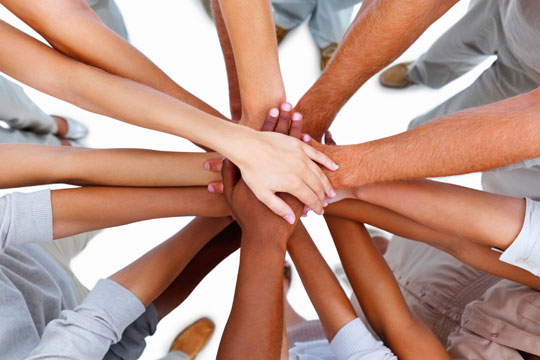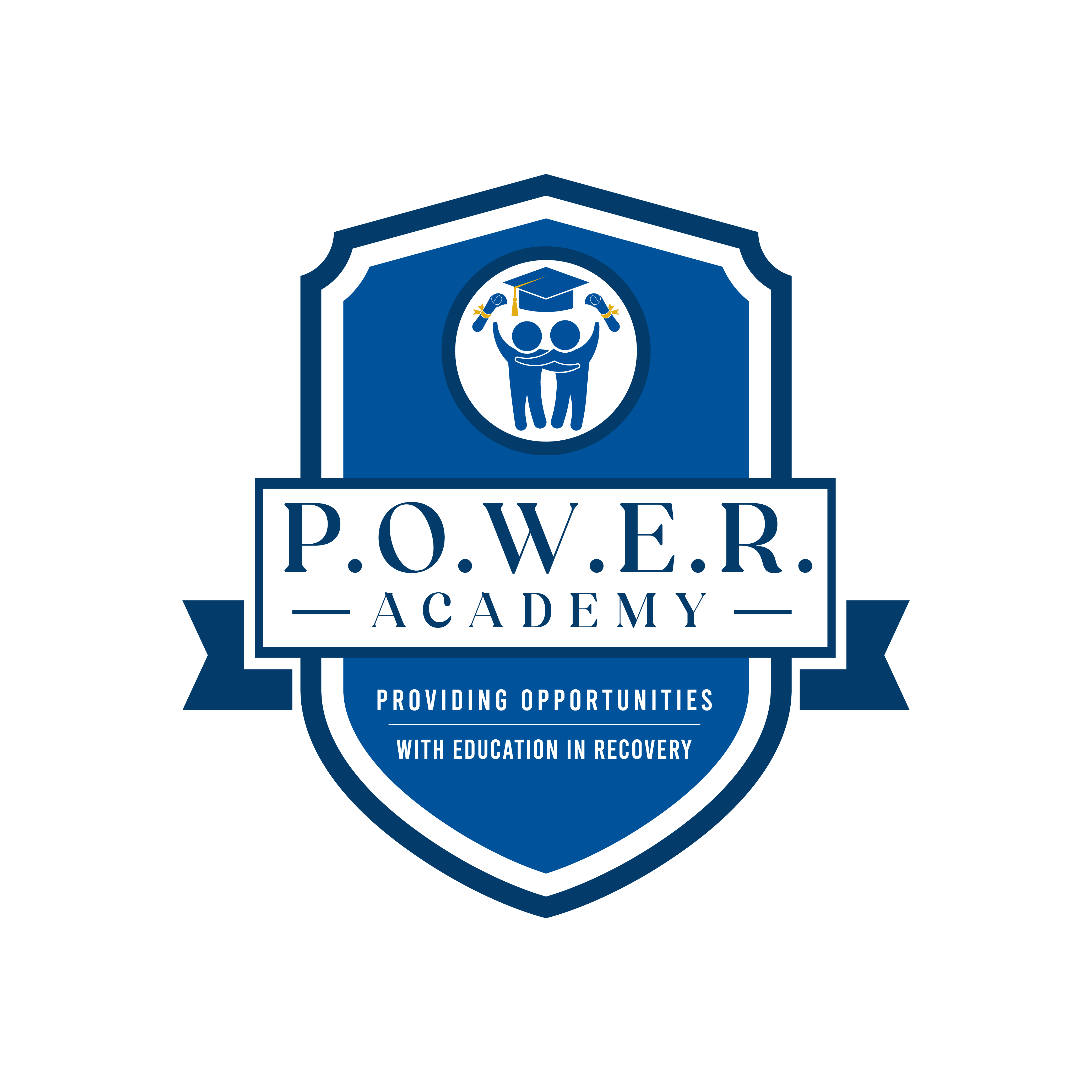
We Recover In Community
Our Approach And Recovery Support
Adolescents are especially vulnerable to possible addiction because their brains are not yet fully developed—particularly the frontal regions that help with impulse control and assessing risk. Pleasure circuits in adolescent brains also operate in overdrive, making drug and alcohol use even more rewarding and enticing. Recovery high schools have proven to be extremely effective in supporting adolescents in their sobriety and mental health, thus having a positive impact on their education. Due to the lack of adolescent continuum of care, 80% of adolescents relapse within 2 weeks upon returning to their high school after receiving primary treatment for substance use and co-occurring disorders. And within 6 months, they return to treatment; thereby, the cycle of relapse to treatment continues. Today there are 44 recovery high schools in the United States with incredible statistics of enhanced abstinence, significant improvement in mental health and increased graduation rates. The continuum of support after treatment is successful when the necessary resources, support and tools are provided to students enabling them to thrive in their sobriety and education.
- IOP (Intensive Outpatient Treatment)
- World-Renowned Meadows Model of Developmental Immaturity taught by our trained and certified Director of Program Development
- Family Support Groups lead by a licensed Therapist
- Recovery Coach assigned to each student
- Layers of accountability, wrap around recovery support and communication within school and across continuum of care including private counselors, probation officers, residential treatment clinicians and IOP facilitators
- Outside resources for students and families
- Daily check-in sessions
- Drug Testing to hold students accountable
- Easy access to recovery support and on-site clinician
- Individual Recovery Plans
- On Staff Recovery Counselors and Coaches
- Wellness curriculum and activities that integrate mind, body and spirit
- Develop individualized plans to handle the therapeutic and crisis needs of students
- Youth support groups and activities
- A Yearly SPROM (Sober Prom) held every school year in May
- Celebrate six-month and one-year sobriety birthdays

P.O.W.E.R. Academy has formed some significant partnerships to support our students in their recovery and mental health.
- IOP (Intensive Outpatient Treatment)
- Dawn Bellingham, B.S. Ed., MAPC, LPC, CSAT, Director of Program Development- is trained and certified to teach the widely acclaimed Meadows Model of Developmental Immaturity. This model is a critical component that will inspire healing for our students and their families at P.O.W.E.R. Academy.
We know recovery doesn’t happen in a day and recovery doesn’t look the same for everyone. Our approach is individualized to each students’ needs. If you have any questions about any of our recovery services, please feel free to reach out.

Recovery high schools have received heightened interest from policymakers and funders. Multiple National Drug Control Strategies from 2010-2020 and the 2016 Surgeon General’s report have specifically discussed the role of recovery schools in fostering community and peer-based approaches. The Surgeon General's report explicitly mentions the need for more research in this area, and many states have passed legislation authorizing and/or funding recovery high schools.
What is a Recovery High School?
According to the Association of Recovery Schools, founded in 2002, the primary purpose of a recovery high school is to educate and support students in recovery from substance use or co-occurring disorders. Students enrolled in a recovery high school are working an abstinence-focused recovery program as agreed upon by the student and the school. Each recovery high school meets state requirements for awarding a school diploma. Recovery high schools are also available to any student in recovery who meets state or district eligibility requirements for attendance, which means students do not have to go through a particular treatment program to enroll, and the schools are not simply the academic component of a primary or extended-care treatment facility or therapeutic boarding school.
Abstinence focused recovery?
A process of change focused on substance use abstinence, through which individuals improve their health and wellness, live a self-directed life, and strive to reach their full potential.
How many Recovery High Schools are there in the U.S.?
There are currently 44 recovery high schools in 21 states.
When did the first Recovery High School open?
Recovery High Schools operated differently in the early days of recovery-based education, but the school most closely resembling the standards of today’s RHSs was a joint effort between the Charleston County (SC) School District and the public Franklin C. Fetter Family Health Center in Charleston, SC, in 1973. The Palmer Drug Abuse Program started a private GED school in 1976, and the first recovery high school not affiliated with a treatment program opened in 1979 in Silver Spring, Maryland, as a publicly funded alternative school.
Are Recovery High Schools publicly funded?
While almost all 44 recovery high schools rely on multiple sources of funding, most are publicly funded:
- Public/Contracted Alternative School – 21
- Public/Charter School – 12
- Private – 11
Are there any standards governing recovery high schools?
The Association of Recovery Schools has established standards for the accreditation of recovery high schools, and ARS accredited its first school in 2013.
What does the evidence say about Recovery High Schools?
- Promising evidence is emerging that shows, compared to students in non-recovery high schools who have received substance use treatment, students in recovery high schools:
- have higher graduation rates;
- report significantly lower absenteeism;
- are more likely to abstain from using substances; and
- have significantly fewer days using marijuana and other drugs.
A recent study from Finch, Tanner-Smith, Hennessy, & Moberg (2017)demonstrated the effectiveness of Recovery High School (RHS) attendance in improving student outcomes. Results from this provide strong evidence of a positive effect of RHSs for adolescents who have received treatment for SUDs. - This article emerges from an NIH-funded study of recovery high schools (RHS). This study followed students for six months to examine the effects of RHS attendance compared to statistically similar recovering students who attend school in other settings.
- A cost-benefit analysis indicated that the high school graduation ratefor recovery high school (RHS) students is at least 20 percentage points higher than the graduation rate for similar students who have had SUD treatment but did not participate in a RHS for at least 30 days.
- Students who attended RHSs had significantly lower odds of dropping out of high school compared to students attending non-RHSs. The predicted probability of high school dropout was 10% for RHS students and 27% for non-RHS students.
- Students who attended RHSs reported significantly less overall absenteeism. RHS attendance was thus associated with over one-half a standard deviation improvement in absenteeism—an effect equivalent to 5 fewer absences from school over the past 90 days.
- Recovery high school students were significantly more likely to report being completely abstinent from alcohol, marijuana, and other drugs at the 6-month and 12-month follow-ups. At 6-month follow-up, RHS students were twice as likely (59% versus 30%) to report complete abstinence from alcohol, marijuana, and other drugs.
- Over the 12-month follow-up period of the study, adolescents who attended RHSs had significantly greater declines in alcohol, marijuana, and other drug use, compared to students attending non-RHSs.
For more information, visit the Association of Recovery Schools:www.recoveryschools.org
School of Medicine and Public Health, University of Wisconsin (Andrew J. Finch, Ph.D.)
Peabody College at Vanderbilt University (Read Full Article on Studies)
Student Substance Use Behaviors and Symptoms — Before and Now
| Pct Before | Pct Now | P | |
|---|---|---|---|
| Weekly use of alcohol, marijuana or other drugs | 90 | 7 | <.001 |
| Use caused to feel depressed, nervous,suspicious, uninterested, other psychological problems | 77 | 12 | <.001 |
| Used in dangerous or unsafe situation | 82 | 10 | <.001 |
| Use caused repeated problems with the law | 57 | 8 | <.001 |
| Reports tolerance | 81 | 7 | <.001 |
| Reports withdrawal problems | 71 | 18 | <.001 |
| Used larger amounts, more often or longer time than meant to | 84 | 11 | <.001 |
| Continued in spite of medical, psychological or emotional problems | 78 | 10 | <.001 |
Student Drug Use Abstinence 90 Days Before Entered School and Since Entered School (n= 174 students who have been in school at least 90 days)
| Pct Before | Pct Now* | P | |
|---|---|---|---|
| Percent abstinent from all alcohol and other drugs | 20 | 56 | <.001 |
| Percent abstinent alcohol | 24 | 62 | <.001 |
| Percent abstinent cannabis | 30 | 71 | <.001 |
| Percent abstinent other drugs | 40 | 74 | <.001 |
| Percent of days abstinent | 32 | 82 | <.001 |
Student Drug Use Patterns 90 Days Before Entered School and Past 90 Days (n= 174 students who have been in school at least 90 days)
| Mean (s.d.) Before | Mean (s.d.) Now* | P | |
|---|---|---|---|
| Days abstinent | 28.5 (36.8) | 266.1 (258.8) | <.001 |
| Days used alcohol | 33.6 (35.4) | 3.5 (11.2) | <.001 |
| Days drank 5 or more drinks at one time | 31.3 (34.2) | 3.0 (11.1) | <.001 |
| Days used cannabis | 47.2 (40.0) | 3.1 (12.3) | <.001 |
| Days used other drugs | 30.9 (37.3) | 2.8 (10.5) | <.001 |
| Smoked cigarettes in last 30 days | NA | 91% (67% daily) | NA |
Selected Student Mental Health Symptoms—Before* and Now (n= 291)
| Feel very trapped, lonely, sad, blue, depressed or hopeless about the future | 73 | 31 | <.001 |
| Have no energy, losing interest in work, school,friends, sex or other things you cared about? | 60 | 20 | <.001 |
| Thought about ending your life or committing suicide | 53 | 16 | <.001 |
| Felt very anxious, nervous, tense, fearful, scared, panicked…. | 68 | 44 | <.001 |
| Trembling, heart racing, restless… | 60 | 40 | <.001 |
| Very distressed, upset when reminded of the past | 65 | 55 | .003 |
| Had a hard time expressing feelings, even to people you cared about. | 83 | 49 | <.001 |
| Had a hard time paying attention at school, work or home. | 86 | 63 | <.001 |
| Been unable to stay in a seat or where you were supposed to be" | 71 | 41 | <.001 |
| Bothered by any nervous, mental or psychological problems? | 69 | 33 | <.001 |
| Disturbed by memories of things from the past that you did, saw or happened to you? | 76 | 55 | <.001 |
Student Opinions about their Progress (n=290-315)
| How do you feel you are doing NOW compared to before coming to this school? | Better | Same-Good | Same-Not Good | Worse |
|---|---|---|---|---|
| Academically (school work and grades) | 71% | 18% | 6% | 5% |
| Emotionally | 59 | 28 | 8 | 5 |
| With your alcohol/drug issues | 80 | 14 | 6 | 1 |
| With family issues | 57 | 28 | 11 | 4 |
| With peer/friendship/social issues | 56 | 33 | 7 | 4 |
